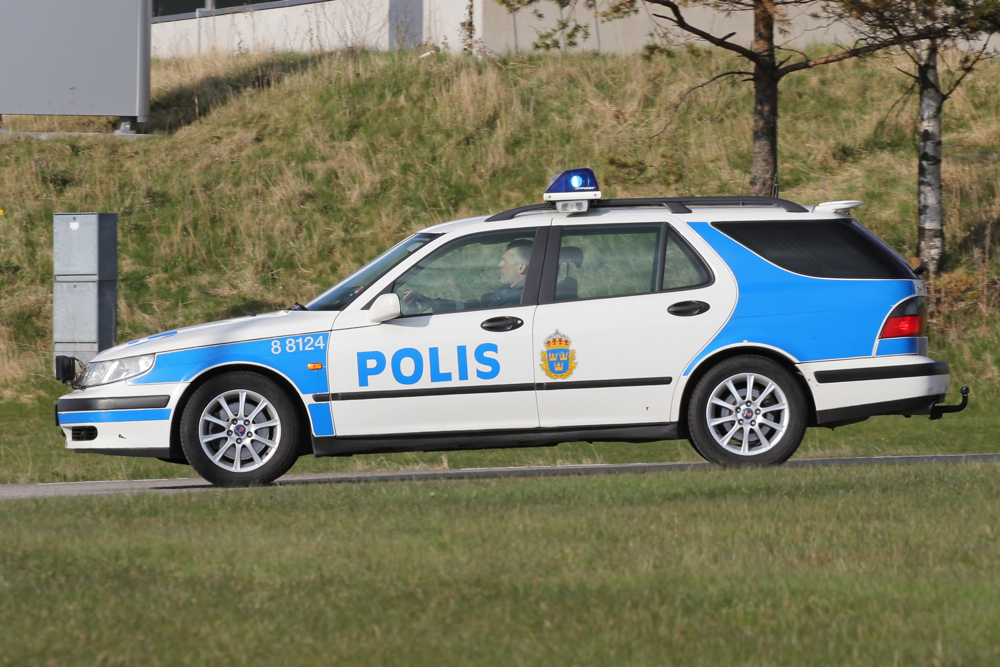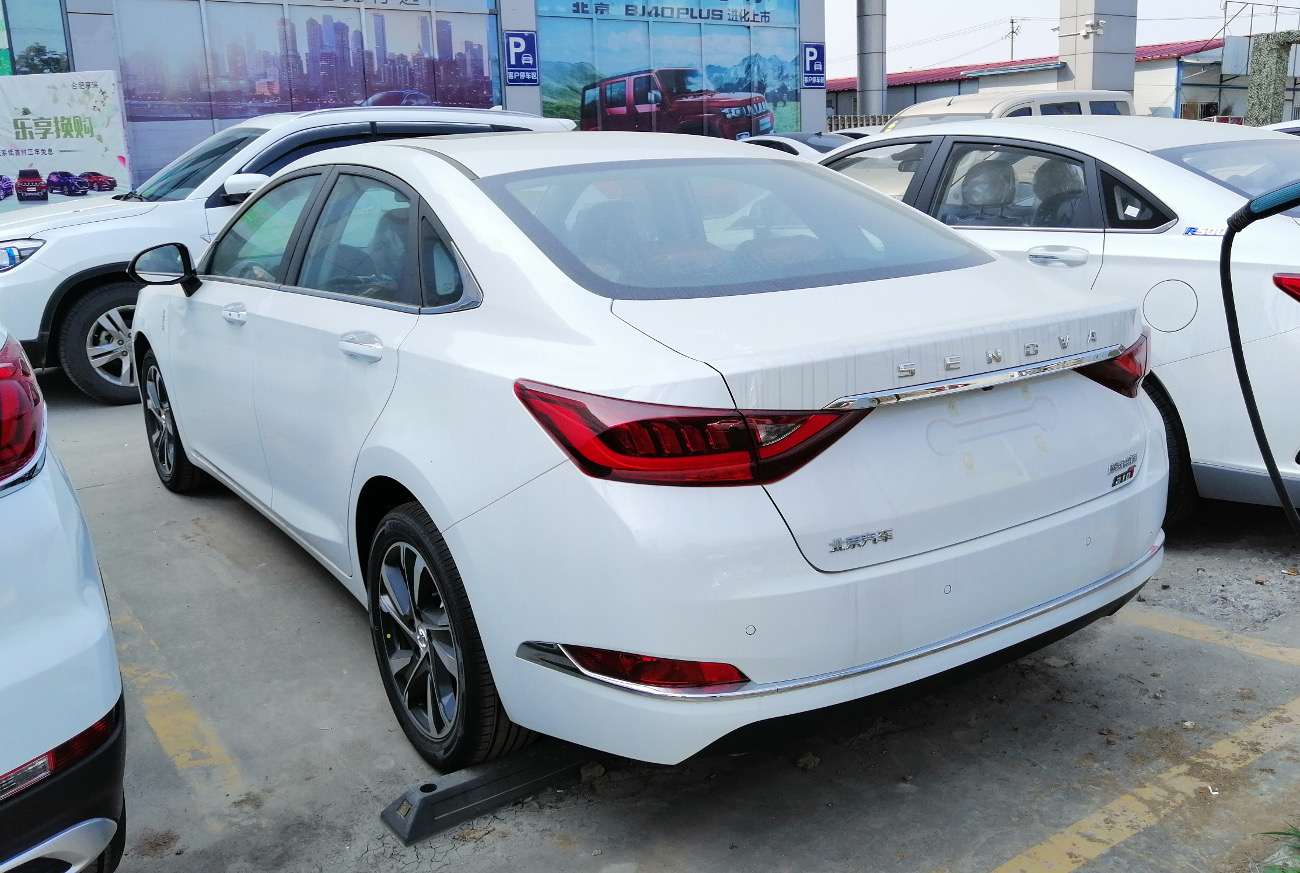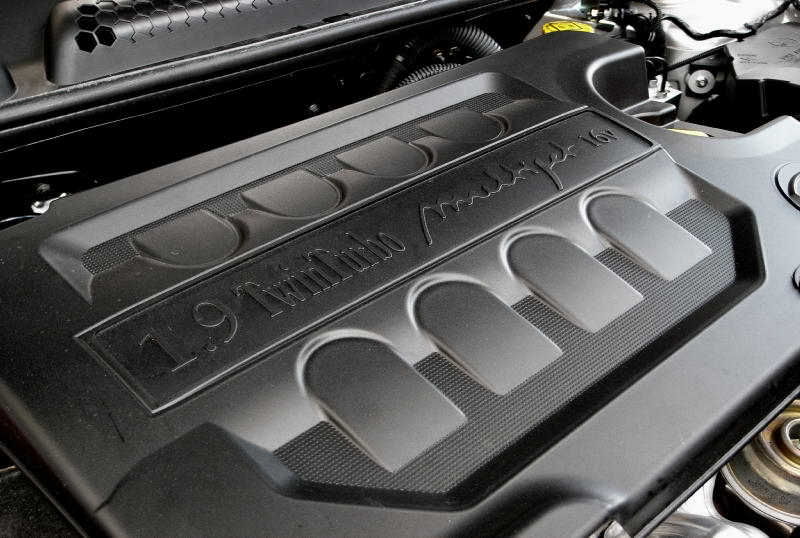|
Saab 9-5
The Saab 9-5 is an executive car that was produced by the Swedish automobile maker Saab from 1997 to 2012. The first generation 9-5 was introduced in 1997 for the 1998 model year, as the replacement to the Saab 9000. At the time, the car represented a significant development for the manufacturer. In the United States, the 9-5 was introduced in the spring of 1998, for the 1999 model year. On September 15, 2009, the second generation was presented at the Frankfurt Motor Show and production began in March 2010. It was the first Saab to be launched under Spyker Cars' ownership, even though it was developed almost completely under GM's ownership. Production ceased in 2012 amid the liquidation of the manufacturer. Overview Saab badged the model as the Saab 95, but consistently advertised it as the Saab 9-5, pronounced "nine five" rather than "ninety-five". This model should not be confused with the Saab 95, produced from 1959 to 1978. The first generation 9-5 was available with s ... [...More Info...] [...Related Items...] OR: [Wikipedia] [Google] [Baidu] |
Saab Automobile
Saab Automobile AB () is a defunct car manufacturer that was founded in Sweden in 1945 when its parent company, Saab AB, began a project to design a small automobile. The first production model, the Saab 92, was launched in 1949. In 1968 the parent company merged with Scania-Vabis, and ten years later the Saab 900 was launched, in time becoming Saab's best-selling model. In the mid-1980s the new Saab 9000 model also appeared. In 1989, the automobile division of Saab-Scania was restructured into an independent company, Saab Automobile AB. The American manufacturer General Motors (GM) took 50 percent ownership. Two well-known models to come out of this period were the Saab 9-3 and the Saab 9-5. Then in 2000, GM exercised its option to acquire the remaining 50 percent. In 2010 GM sold Saab Automobile AB to the Dutch automobile manufacturer Spyker Cars N.V. After many years establishing a sound engineering reputation and ultimately a luxury price tag, Saab failed to build i ... [...More Info...] [...Related Items...] OR: [Wikipedia] [Google] [Baidu] |
BAIC Group
Beijing Automotive Group Co., Ltd. (BAIC) is a Chinese state-owned automobile manufacturer headquartered in Shunyi, Beijing. Founded in 1958, it is the sixth largest automobile manufacturer in China, with 1.723 million sales in 2021. The company produces and sells vehicles under its own branding, such as Arcfox, Beijing, BAW, Changhe, Foton Motor, Ruili Doda, as well as under foreign-branded joint ventures such as Beijing-Benz and Beijing-Hyundai. It also produces electric vehicles under some of the previously listed brandings, including dedicated EV brands such as Arcfox. Its principal subsidiaries include the passenger car maker BAIC Motor (44.98% share); military vehicle and light truck maker BAW; and truck, bus, and agricultural equipment maker, Foton Motor. A large proportion of sales BAIC's sales is in agricultural, commercial, and military vehicles. History BAIC was originally founded in 1958 as Beijing Automobile Works (BAW), which found success producing the Do ... [...More Info...] [...Related Items...] OR: [Wikipedia] [Google] [Baidu] |
Opel Vectra
The Opel Vectra is a mid-size car ( large family car) that was engineered and produced by the German automaker Opel from 1988 until 2010. Available in saloon, hatchback and estate body styles, the Vectra was also sold by the Vauxhall marque in the United Kingdom as the Vauxhall Cavalier from 1988 to 1995 and then as the Vauxhall Vectra from 1995 to 2008, and it was also sold by Holden in Australia as the Holden Vectra, by Chevrolet in Latin America as the Chevrolet Vectra. The Vectra was introduced in October 1988 as a replacement for the Opel Ascona, and was itself replaced in November 2008 by the new Opel Insignia, the nameplate spanning three generations and almost twenty one years. Vectra A (1988–1995) The first generation Vectra, known as the Vectra A, was introduced in October 1988 for the 1989 model year, as a four door notchback saloon, replacing the Opel Ascona C. A five-door hatchback version arrived in March 1989, and a coupé based on the Vectra, ... [...More Info...] [...Related Items...] OR: [Wikipedia] [Google] [Baidu] |
Senova D Series
The Beijing U7 or previously the Senova D70 is a mid-size sedan produced by BAIC under the Senova sub-brand and later the Beijing sub-brand respectively. The model range was originally the Beijing Auto Shenbao D-Series, and renamed to Senova D70 after the launch of the Senova brand. The second generation model added an additional Chinese name, Zhidao, at launch, and was later renamed to Beijing U7 after the launch of the revamped Beijing brand. First Generation (2013–2017) The Senova D70 was formerly known as the Beijing Auto Shenbao D-Series which came in two trim levels, the Shenbao D280 and the Shenbao D320. It was previewed by the Beijing Auto C70G prototype. The Shenbao D-Series was based on the Saab 9-5 and it debuted on the 2013 Shanghai Auto Show and was launched on the Chinese car market on May 11, 2013. Pricing ranges from 165,800 yuan to 235,800 yuan. The Beijing Auto Senova D-Series was renamed to Beijing Auto Senova D70 in 2014, bringing the name in line with t ... [...More Info...] [...Related Items...] OR: [Wikipedia] [Google] [Baidu] |
GM2900 Platform
General Motors introduced the mid-size transverse engine front-wheel drive GM2900 platform in 1988 with the introductions of the Opel Vectra A and the Vauxhall Cavalier Mk.3 for the 1989 model year. The platform was intended to replace both division's J-cars, the Opel Ascona C and the Vauxhall Cavalier Mk.2, although the platform eventually branched out to Holden, Chevrolet's Latin American branch, and even Saab and Saturn. The GM2900 platform was replaced by the Epsilon platform in 2003, although Saab continued to use the lengthened GM2902 platform for its 9-5 model until 2010, when it was switched to the Epsilon 2 platform. The tooling for the first generation Saab 9-5 was sold to BAIC and with help from Saab engineers they will develop new models for production under the Senova brand. Models * 1993–1996 Chevrolet Vectra A * 1997–2005 Chevrolet Vectra B * 1990–1997 Holden Calibra * 1996–2002 Holden Vectra * 1990–1997 Opel Calibra * 1988–1995 Opel Vectra A * 1995� ... [...More Info...] [...Related Items...] OR: [Wikipedia] [Google] [Baidu] |
DMAX V6 Engine
The DMAX V6 engine is a Diesel engine. It was designed, and is produced by Isuzu in Fujisawa, Kanagawa, Japan but the design rights to the engine are now owned by General Motors. It uses high-pressure common rail direct injection with four valve per cylinder, cylinder heads. A variable-geometry turbocharger and intercooler are also used. The engine was used in Europe by GM's Opel subsidiary and by Renault. Output is nominally at 4000 rpm and at 1800 rpm. The engine's internal name is ''6DE1''. Applications: * Saab 9-5 :2001-2005 internal engine's name ''D308L'' . * Opel/Vauxhall Vectra and Signum :2003-2005 internal engine's name ''Y30DT'' . :2005-2008 internal engine's name ''Z30DT'' . Renault * Renault Vel Satis :2000-2010 internal engine's name ''P9X 701'' . :2005-2010 internal engine's name ''P9X 715'' . * Renault Espace :2002-2006 internal engine's name ''P9X 701'' . :2006-2010 internal engine's name ''P9X 715'' . See also * List of GM engines T ... [...More Info...] [...Related Items...] OR: [Wikipedia] [Google] [Baidu] |
List Of GM Engines
This list of GM engines encompasses all engines manufactured by General Motors and used in their cars. Divisions When General Motors was created in 1908, it started out with Buick and soon after acquired Oldsmobile, Cadillac and Oakland. There were dozens of other smaller companies that William Durant acquired during his first employment term until he was let go due to financially overextending his purchases. He regained control when he brought on Chevrolet in 1917 which was short lived until he was let go for the second time. This meant that the different core brands designed and manufactured their own engines with few interchangeable parts between brands, while sharing chassis, suspension and transmissions. One of the companies Durant bought in 1909 was the Northway Motor and Manufacturing Company founded by Ralph Northway who had previously supplied engines to Buick, Oakland, Cartercar and other 1900s manufacturers, including V8 engines to Oldsmobile, Oakland and Cadilla ... [...More Info...] [...Related Items...] OR: [Wikipedia] [Google] [Baidu] |
Turbodiesel
The term turbo-diesel, also written as turbodiesel and turbo diesel, refers to any diesel engine equipped with a turbocharger. As with other engine types, turbocharging a diesel engine can significantly increase its efficiency and power output, especially when used in combination with an intercooler. Turbocharging of diesel engines began in the 1920s with large marine and stationary engines. Trucks became available with turbo-diesel engines in the mid-1950s, followed by passenger cars in the late 1970s. Since the 1990s, the compression ratio of turbo-diesel engines has been dropping. Principle Diesel engines are typically well suited to turbocharging due to two factors: * A "lean" air–fuel ratio, caused when the turbocharger supplies excess air into the engine, is not a problem for diesel engines, because the torque control is dependent on the mass of fuel that is injected into the combustion chamber (i.e. air-fuel ratio), rather than the quantity of the air-fuel mixture ... [...More Info...] [...Related Items...] OR: [Wikipedia] [Google] [Baidu] |
Fiat JTD Engine
Multijet is Fiat Chrysler Automobiles' term for its current common rail direct injection turbodiesel engine range. Most of the Fiat, Alfa Romeo, Lancia range as well as certain Chrysler, RAM Trucks, Jeep and Maserati vehicles are equipped with Multijet engines. Ownership of some Fiat Multijet designs is shared with General Motors as part of a settlement of the failed merger between the two auto conglomerates. GM Powertrain Torino group in Turin, Italy manages their interest in these engines. Some PSA Peugeot Citroën diesel engines are also rebadged JTD units, and vice versa.(source needed) Fiat's common rail diesel engine is also known as JTD, an initialism of Jet Turbo Diesel.autobild.deJTD - Lexikon - autobild.de accessdate: 19. June 2019 Characteristics The property that distinguishes the Multijet from previous generations of common rail diesel engines from FCA is the combustion of the fuel, which is split into multiple injections, thus allowing for a more comple ... [...More Info...] [...Related Items...] OR: [Wikipedia] [Google] [Baidu] |
Diesel Engine
The diesel engine, named after Rudolf Diesel, is an internal combustion engine in which ignition of the fuel is caused by the elevated temperature of the air in the cylinder due to mechanical compression; thus, the diesel engine is a so-called compression-ignition engine (CI engine). This contrasts with engines using spark plug-ignition of the air-fuel mixture, such as a petrol engine ( gasoline engine) or a gas engine (using a gaseous fuel like natural gas or liquefied petroleum gas). Diesel engines work by compressing only air, or air plus residual combustion gases from the exhaust (known as exhaust gas recirculation (EGR)). Air is inducted into the chamber during the intake stroke, and compressed during the compression stroke. This increases the air temperature inside the cylinder to such a high degree that atomised diesel fuel injected into the combustion chamber ignites. With the fuel being injected into the air just before combustion, the dispersion of the fuel i ... [...More Info...] [...Related Items...] OR: [Wikipedia] [Google] [Baidu] |
V6 Engine
A V6 engine is a six-cylinder piston engine where the cylinders share a common crankshaft and are arranged in a V configuration. The first V6 engines were designed and produced independently by Marmon Motor Car Company, Deutz Gasmotoren Fabrik and Delahaye. Engines built after World War II include the Lancia V6 engine in 1950 for the Lancia Aurelia, and the Buick V6 engine in 1962 for the Buick Special. The V6 layout has become the most common layout for six-cylinder automotive engines. Design Due to their short length, V6 engines are often used as the larger engine option for vehicles which are otherwise produced with inline-four engines, especially in transverse engine vehicles. A downside for luxury cars is that V6 engines produce more vibrations than straight-six engines. Some sports cars use flat-six engines instead of V6 engines, due to their lower centre of gravity (which improves the handling). The displacement of modern V6 engines is typically between , t ... [...More Info...] [...Related Items...] OR: [Wikipedia] [Google] [Baidu] |

_(crop).jpg)




